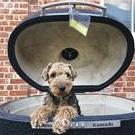Leaderboard
Popular Content
Showing content with the highest reputation on 07/23/2021 in all areas
-
Smoked Bourbon Chicken 7 SEASON 8 MAIN COURSES CHICKEN GRILLING & BARBECUE This combination sounded perfect. All we had to do was figure out how to infuse smoke and bourbon flavors while keeping the chicken from drying out. SERVES4 TIME2¼ hours, plus 20 minutes resting SEASON 8Break Out the Bourbon HAS VIDEO Watch our test cook make this recipe from start to finish. WHY THIS RECIPE WORKS Cooking the marinade was the first essential step to getting the most flavor compounds into our chicken. Slashing the chickens also allowed for better penetration of the marinade flavors before grilling. Splitting our chickens into halves a... Read More PRINT SAVE TRY THIS RECOMMENDED COOKING COURSE JERK CHICKEN GATHER YOUR INGREDIENTS 1 ¼ CUPS BOURBON 1 ¼ CUPS soy sauce ½ CUP packed brown sugar 1 SHALLOT, MINCED 4 GARLIC CLOVES, MINCED 2 TEASPOONS PEPPER 2 (3 1/2- TO 4-POUND) whole chickens, GIBLETS DISCARDED 1 CUP WOOD CHIPS 4 (12-INCH) WOODEN SKEWERS VIEW INGREDIENTS KEY EQUIPMENT Chimney Starters * BEFORE YOU BEGIN USE A BOURBON YOU’D BE HAPPY DRINKING. USE ALL THE BASTING LIQUID IN STEP 5. 1 INSTRUCTIONS BRING BOURBON, SOY SAUCE, SUGAR, SHALLOT, GARLIC, AND PEPPER TO BOIL IN MEDIUM SAUCEPAN OVER MEDIUM-HIGH HEAT AND COOK FOR 1 MINUTE. REMOVE FROM HEAT AND LET COOL COMPLETELY. SET ASIDE 3/4 CUP BOURBON MIXTURE FOR BASTING CHICKEN. (BOURBON MIXTURE CAN BE REFRIGERATED UP TO 3 DAYS IN ADVANCE.) 2 WITH CHICKENS BREAST SIDE DOWN, USING KITCHEN SHEARS, CUT THROUGH BONES ON BOTH SIDES OF BACKBONES; DISCARD BACKBONES. FLIP CHICKENS OVER AND, USING CHEF’S KNIFE, SPLIT CHICKENS IN HALF LENGTHWISE THROUGH CENTERS OF BREASTBONES. CUT 1/2-INCH-DEEP SLITS ACROSS BREASTS, THIGHS, AND LEGS, ABOUT 1/2 INCH APART. TUCK WINGTIPS BEHIND BACKS. DIVIDE CHICKEN HALVES BETWEEN TWO 1-GALLON ZIPPER-LOCK BAGS AND DIVIDE REMAINING BOURBON MIXTURE BETWEEN BAGS. SEAL BAGS, TURN TO DISTRIBUTE MARINADE, AND REFRIGERATE FOR AT LEAST 1 HOUR OR UP TO 24 HOURS, FLIPPING OCCASIONALLY. 3 JUST BEFORE GRILLING, SOAK WOOD CHIPS IN WATER FOR 15 MINUTES, THEN DRAIN. USING LARGE PIECE OF HEAVY-DUTY ALUMINUM FOIL, WRAP SOAKED CHIPS IN FOIL PACKET AND CUT SEVERAL VENT HOLES IN TOP. REMOVE CHICKEN HALVES FROM MARINADE AND PAT DRY WITH PAPER TOWELS; DISCARD MARINADE. INSERT 1 SKEWER LENGTHWISE THROUGH THICKEST PART OF BREAST DOWN THROUGH THIGH OF EACH CHICKEN HALF. 4 FOR A CHARCOAL GRILL: OPEN BOTTOM VENT HALFWAY. LIGHT LARGE CHIMNEY STARTER FILLED WITH CHARCOAL BRIQUETTES (6 QUARTS). WHEN TOP COALS ARE PARTIALLY COVERED WITH ASH, POUR INTO STEEPLY BANKED PILE AGAINST SIDE OF GRILL. PLACE WOOD CHIP PACKET ON COALS. SET COOKING GRATE IN PLACE, COVER, AND OPEN LID VENT HALFWAY. HEAT GRILL UNTIL HOT AND WOOD CHIPS ARE SMOKING, ABOUT 5 MINUTES. FOR A GAS GRILL: REMOVE COOKING GRATE AND PLACE WOOD CHIP PACKET DIRECTLY ON PRIMARY BURNER. SET GRATE IN PLACE, TURN ALL BURNERS TO HIGH, COVER, AND HEAT GRILL UNTIL HOT AND WOOD CHIPS ARE SMOKING, ABOUT 15 MINUTES. LEAVE PRIMARY BURNER ON HIGH AND TURN OFF OTHER BURNERS. (ADJUST PRIMARY BURNER AS NEEDED TO MAINTAIN GRILL TEMPERATURE BETWEEN 350 TO 375 DEGREES.) 5 CLEAN AND OIL COOKING GRATE. PLACE CHICKEN HALVES SKIN SIDE UP ON COOLER SIDE OF GRILL WITH LEGS POINTING TOWARD FIRE. COVER AND COOK, BASTING EVERY 15 MINUTES WITH RESERVED BOURBON MIXTURE, UNTIL BREASTS REGISTER 160 DEGREES AND THIGHS REGISTER 175 DEGREES, 75 TO 90 MINUTES, SWITCHING PLACEMENT OF CHICKEN HALVES AFTER 45 MINUTES. (ALL OF BOURBON MIXTURE SHOULD BE USED.) TRANSFER CHICKEN TO CARVING BOARD, TENT LOOSELY WITH FOIL, AND LET REST FOR 20 MINUTES. CARVE AND SERVE.3 points
-
Thank you, Bruce, yes, the salad greens are fresh as they can get, right from my garden, then for a quick wash and then onto the plate.3 points
-
@tekoboI love geeking out on stuff like this. HM I hope the police were not watching when I ordered a fair bit of saltpetre on amazon.3 points
-
When KK was new and we were constantly upgrading the grills, there would be certain changes that someone would see on the forum, then buy a grill and complain it did not have the feature / was not the latest and greatest. This got old, so like software I gave the major changes their own version numbers. At a certain point, I carried so much inventory it made adding features difficult. How do I add a $30 cold smoker port when I had 40 23's and 25 32's without making $300k plus worth of grills suddenly dated.. My solution was to photoshop out the ports until all the grills without them were sold and then put of the photos with ports all at once... When I completely sold out last April, I asked myself is there anything that I would like to add now that I could not add before? It was the top lip protector.. the 32" and 42" grills have enough weight that they close with more force and the lip protection makes sense and I like the look.. Bit more robust.. BTW it was simply one basket/16lbs of charcoal at 235º will burn for 85 hours. The 16 lbs was my dense coconut shell charcoal. During lockup this spring I filled the 42" charcoal basket with almost three boxes of coconut shell charcoal and it ran 215 hours. I'll try to post the documentation soon.. I ran a stopwatch and took shots of the burning charcoal everyday at dusk with the stopwatch running then took a shot of the phone with the stopwatch and my phone for the actual time and date. This being proof for the haters and deniers.. LOL3 points
-
It always helps to consider the source, and how their requirements are different than yours. Thomas Keller calls for quick 10% salt brines for seafood? In a restaurant kitchen there isn't room for an overnight "equilibrium" 0.5% brine. At home that same brine lets you buy fish for several days. Most recipes are really dumbed down, and most people spread techniques that are only partially evolved. And a popular author could be aware that readers have foil, but they don't have pink (uncoated! white is coated, wrong) butcher paper. Do they say something? I would only trust a source recommending foil if they explicitly make the comparison with pink butcher paper, and explain why they prefer foil. Aaron Franklin is arguably the most deservedly famous barbecue guru today. He's primarily a restauranteur, not a "personality", so he's freed from a financial incentive to dumb down his advice. On the contrary, there's a showstopper chapter "Building a Smoker" in Franklin Barbecue: A Meat-Smoking Manifesto [A Cookbook], how anyone can make their own cooker from a recycled 500 gallon propane tank with "basic metalworking skills". I can do most things but this is still on my list... He faces a restaurant constraint, perfect for you: All of his cookers run at 275°. Why? He prefers this to lower temperatures, gets better throughput, and doesn't have to juggle capacities of cookers set to different temperatures. He gives the clearest directions I've seen anywhere for cooking a 12 to 14-pound packer cut brisket, wrapping at 6 hours or so in pink butcher paper. I've varied my approach over the years: Temperature, wrapping, beef source, dry age? I believe that following exactly Aaron Franklin's protocol is spot-on. For a different opinion, in Brisket Tricks and elsewhere, @mguerra has been advocating for 325° or so. What you propose is decidedly not "hot and fast". 275° is reasonable middle ground, not falling prey to equating seriousness of intent with slowness of cook. The very idea that "low & slow" is such a sticky idea should serve as a warning not to take it as gospel. On the contrary, another of my favorite BBQ books is Legends of Texas Barbecue Cookbook: Recipes and Recollections from the Pitmasters. I don't follow any of the recipes, but I learned a lot about the diversity of approaches in Texas. It freed me from a blind adherence to "low & slow". I believe that the most important factor in brisket is the beef itself. I'll travel an hour and pay three times what others consider reasonable to buy brisket from the Golden Gate Meat Company in San Francisco. They'll dry age a few days on request. I also believe that the ideal cooker temperature is a function of the quality of the meat: 275° for the meat that takes an hour's drive and serious cash, varying up to 325° for more typical and affordable briskets. When there's less collagen/whatever to dissolve, time is your enemy. I no longer cook any brisket at 225°. I've never eaten at Franklin's Barbecue, but the best brisket I've had in my life was in Elgin, Texas. (#2, #3, #4 would be my own.) They can source better brisket in Texas, the market demands it. It melts, you want to spread the fat cap on toast like marmalade. Aaron Franklin's advice is tuned to Texas brisket sources. For potential owners, let me be clear that while Aaron Franklin uses an entirely different cooker, my own preferences are adapted to a Komodo Kamado. Compared to other ceramic cookers, a KK is far better insulated, so it maintains temperature with far less airflow. Airflow dries the meat out. Franklin's 1000 gallon cookers are good guides for us, because with scale he also controls evaporation.2 points
-
2 points
-
That looks gorgeous @johnnymnemonic. Super nice to be re-creating, and bettering, a recipe from your childhood. Your post sent me on a very quick trip down a rabbit hole. I have a range of "chemicals" that I call on when curing meats. Prague No 1 and Prague No 2 are both pink salts. Checking on the ingredients from the brand that I use, No 1 is mostly kosher salt as you say but has 6.25% sodium nitrite. No 2 contains 4.75% of potassium nitrate as well as the sodium nitrite. The former is for short cures and latter for long cures. I also have some saltpetre that I keep in deep store and only get out to use and measure on my drug dealer scales when a recipe calls for it. Saltpetre is the stuff that gets you noticed by the police if you order it in any quantity as it is a component in gunpowder. All of that makes me wonder why I am putting any of this in my food?! Eek. All good. Measured carefully and consuming the resulting cured meats in moderation hasn't killed me, yet.2 points
-
THE MAN speaks! (2) BBQ with Franklin: Brisket Wrap Test - YouTube A couple of other side-by-side cooks from some folks that know a thing or two about Q: (2) Brisket Wrap Test | Foil, Butcher Paper, Naked | BBQ Champion Harry Soo SlapYoDaddyBBQ.com - YouTube (2) Butcher Paper vs. Foil for Barbecue - YouTube (2) Smoking Brisket wrapped in Foil vs Butcher Paper - Brisket Series part 1 of 3 - YouTube1 point
-
Your Mac and cheese looks yuuuuumy Mac and that salad looks especially delicious! Are those all veggies from your garden?1 point
-
Two things that directly lead to my weight loss: I retired. When working, i had a long time between breakfast and lunch and was always very hungry at lunch so I ate too early and too much at lunch. I was then very hungry again at dinner and i are too much then as well as getting take-out too often. I'm sleeping later now which shortens the time between breakfast and lunch so I'm eating less at lunch so i have one "real" meal each day instead of two. I used Noom which helped me with portion control and better balance in my meals; it also helped with strategies for dealing with different circumstances that can lead to overeating. I have some pretty serious back and neck issues as well as severe sleep apnea; i hoped losing weight would help with bit of these but it hasn't. i do feel a bit better overall though and I'm moving better. I'm dreading having to refresh my wardrobe tho - really don't like shopping for clothes. I did make an amazing discovery - losing weight has improved my vision! I'm can now see body parts i hadn't seen in years!1 point
-
That's good advice for using a chamber machine to package liquids. I have both a chamber machine and an impulse sealer, and I make stock all the time. If it was faster to use the chamber machine, or even just more reliable or less finicky, I'd use the chamber machine. For me, it's faster and easier to burp the air out of the bag, against a counter edge, and use an impulse sealer. I'd make an exception if the chamber machine was a few feet away from the stock (mine isn't though I like the exercise; I routinely walk each packet out separately as I prefer the walk to waiting). Then, following your advice, dial in the exact seconds needed to reach 0.2 bar of vacuum so the chamber machine can complete its job unattended. Get the next packet ready.. I have three of the steam table trays shown in my earlier post. They're just deep enough to take the weight off a packet of stock, and the metal conducts heat so all packets freeze quickly. My freezer just has room to stagger the trays so each rim supports the next.1 point







